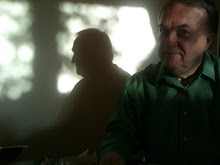Last year I set up a system using QR Codes to identify what was happening in different parts of the Townhouse Gardens. One side of the pl...
Last year I set up a system using QR Codes to identify what was happening in different parts of the Townhouse Gardens. One side of the plant ID stick was a code that linked to the a "public" post on this blog site. The other side of the stick was a code that opened the "editors" version of the blog post.
I had suggested this would be nice in public gardens such as the Huntington Gardens or the Botanical Gardens at the nearby University of California, Riverside. Since then we have run into QR Codes at restaurants that connect to online menus. Menus are a great idea as you don't need to disinfect the plastic/paper menus, you can alter the choices if an ingredient is unavailable, and you can stealthily raise the cost.
It was the first time I had tried this method of digital sharing/record keeping in the garden. It was flawed. Of course the biggest flaw was in this time of Covid, who has visitors! But I remain optimistic that friends and and family will be able to visit one day, that was not the flaw I am correcting in the 2022 version.
The sticks, labels, and Gorilla tape covers worked great together. Cold and record highs, drought and atmospheric rivers, had no effect on the labels. They did not fade or spoil.
The problem was the QR Code for the public. It linked to a single blog post. My intention was to give a user/visitor an up-to-date version of the garden, not the original post. I should not have made a link to a single post, like this QR Code for my stone fruit trees from last year:
www.townhousegardening.com/2021/03/plot-1_5.html
But what did the trees look like when they bloomed? Did they fruit? Are they the only stone fruit trees?
This year, the QR Codes are a search link that gathers all of the posts about a subject with the latest one at the top.
www.townhousegardening.com/search/label/Spices
Using this code, a garden visitor sees all of the posts about spices, with the latest one first. When there is an update, that post will be at the top of the search results.
The new and improved tags link to a subject, not just a single post. So when you scan the peas either on this page or while walking in the garden, you see all the posts related to peas at the Townhouse Gardens. The latest post will be at the top. As before I used Google Sheets to create the QR Codes. Here is the formula for creating a QR Code (note that the cell B2 is the URL for the home page of this blog):
=image("https://image-charts.com/chart?chs=150x150&cht=qr&choe=UTF-8&chl="&ENCODEURL(B2))
Heres is a sample of some of the QR codes used in the garden:
 |
| Pole Beans |
 |
| Sugar Snap Peas |
Using QR Codes sealed behind clear Gorilla tape is an excellent way of keeping track of your garden, whether it is to identify a variety of rose, or which flowers are suppose to emerge from that pot of bulbs. Creating a QR map of the yard could be a fun activity with kids. It is a good cross of technology and gardening to get a child off the couch and into the yard. At least it works for this slightly older kid!





![[featured]](https://photos.smugmug.com/photos/i-2wmsF7p/0/29fb908b/L/i-2wmsF7p-L.jpg)


















COMMENTS